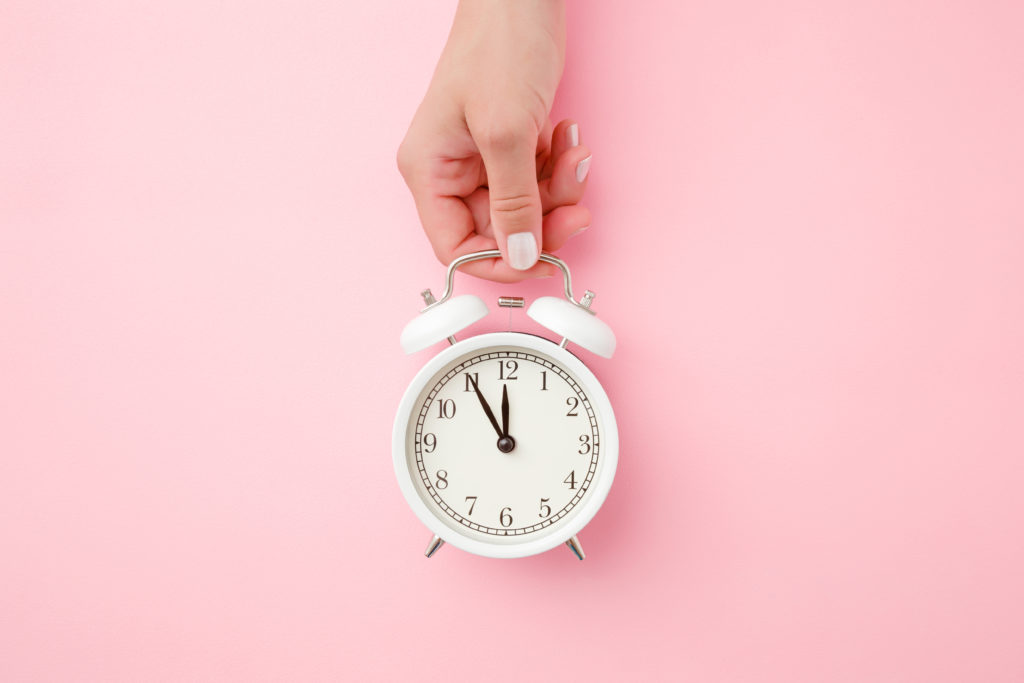
Make Daylight Saving Time Easier Than Ever
Last updated on September 8th, 2023 at 01:58 pm

We’re just a few days away from the time change, so it’s time to get your family ready for it. This one-hour transition may not seem all that extreme, but this twice-yearly shift can add up to many hours of lost sleep over the days or weeks it takes to adjust.
Make daylight saving time easier than ever this year. Here are some simple things you can do to ensure your body is in sync with the changing schedule.
Keep a routine.
When daylight saving ends, many tend to go along with their body’s natural sleep schedule. But this can be counterproductive: if you’ve spent six months waking up at 7 a.m. and going to sleep at 10 p.m., it can take your body some time to adjust to a new schedule.
Instead, try keeping as consistent an evening routine as possible by going to bed and waking up at roughly the same time every day (even on weekends), including during daylight saving time fallback. That way, your body learns when it needs rest and when it should stay awake — and you’ll never have trouble figuring out whether or not it’s still morning!
Limit blue-light exposure at night (digital devices and screens).
Even if you’re not a night owl, the evening seems to be the best time to get things done. That’s when most people are home from work and school and ready for some free time before bed. But it turns out that spending too much time on your computer or phone before bed can be bad for your health — and not just because of what it does to your sleep schedule.
There’s a lot of research showing that blue light from screens has a negative effect on sleep. It suppresses the natural production of melatonin, which helps regulate our circadian rhythms, and makes it harder for us to fall asleep at night.
To experience the best effect, try to disconnect from digital devices and bright screens two to three hours before bed.
Give yourself enough time to sleep.
When you’re in a rush to fall asleep, it’s easy to get discouraged. The best way to avoid this is by giving yourself adequate time before bed. If you want your body and mind to be ready for bed at 10 p.m., start winding down an hour or two earlier by dimming lights and turning off electronics. Then, let yourself get into whatever position feels most comfortable for sleep.
If you find yourself still awake after 20 minutes or so, do something relaxing like reading, stretching, or listening to music until you feel sleepy.
Get help with homeopathy.
Sometimes you need a little extra help on those occasional sleepless nights. That’s when to consider using a natural sleep aid. Homeopathic medicines are an excellent option for families because they’re non-habit forming. Plus, they work without the risk of next-day grogginess, which is a common effect of other sleep aids including melatonin.
SleepCalm is made with plant-based active ingredients to help you fall asleep, stay asleep, and reduce difficulty falling asleep.* It’s available in meltaway tablets for adults and children ages 12 and older, as well as a kids’ formula in pre-measured liquid doses and meltaway pellets for ages 3 and older.
By preparing ahead for the time change and keeping these tips in mind, you can get back into a regular sleep routine in no time.
*Claims based on traditional homeopathic practice, not accepted medical evidence. Not FDA evaluated.
Share article:
Related Articles:


Are Screens Stealing Your Sleep? Quick Tips to Reduce the Effects of Blue Light




